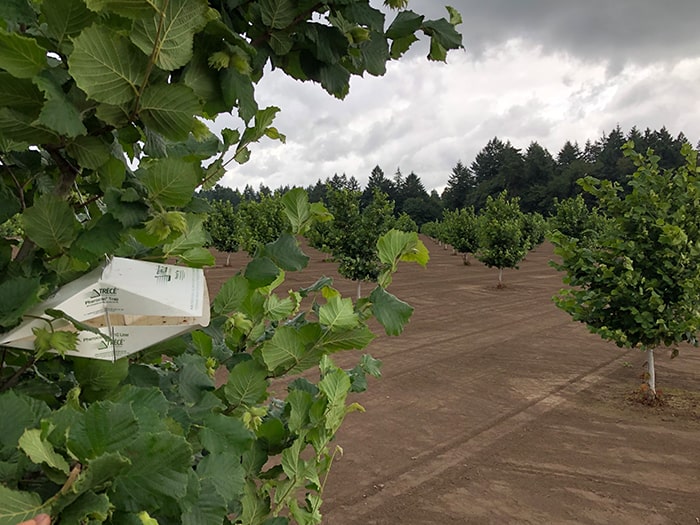Hazelnut Growers of Oregon
Filbertworm Monitoring & Control
Filbertworm is the most important insect pest for hazelnuts, resulting in significant losses if no control measures are taken. The old standard was to spray based on a calendar or growth stage. This generally works, but growers can easily over or under apply without monitoring. Over application is not only costly but can damage beneficial insects that help with insect and mite biocontrol. Underapplication can result in filbertworm damage and increase dockage at sampling. Many agronomy services offer filbertworm trapping to better time control measures.
Filbertworm traps use a pheromone to attract the moth stage of the pest and sticky paper that holds the moths in place. Field staff or the growers count the number of moths and see if the field warrants control measures. Typically, an average of 2-3 moths across the field, or more than 5 moths in any one trap is the action threshold. Fields that are surrounded by native vegetation are the most difficult, with oak trees being the most problematic as they are an alternate host.
Once control is decided on, most farmers will use a pyrethroid type insecticide Examples include Asana XL, Baythroid XL, and Warrior II. These products are effective and cheap, but also target many beneficial insects as well. Worm/Moth specific products like Altacor are more targeted and safer to beneficial insects but are typically more expensive. Benefits of this tactic may include less aphid or mite issues late season. OSU is also working on control using mating disruption. This works by releasing so much of the mating pheromone that the moths can’t find their mates.
